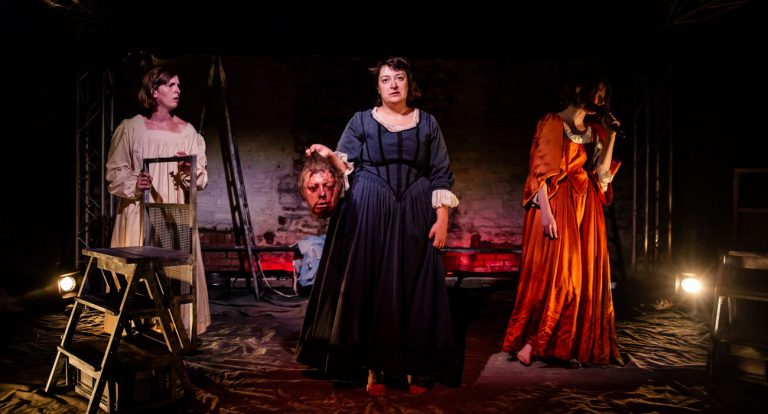With museums and theaters closed, drama and art are having a hard time during quarantine. However, both these sectors have the chance of reinventing themselves. That is what the theater company Breach had already done, ahead of time; they combined art and drama in It’s true, It’s true, It’s true, a play that tells the shocking story of the rape trial brought by the painter Artemisia Gentileschi in 1612.
You can still watch the play this weekend at the Barbican London website!
Artemisia Gentileschi
You may already know her, but in case you don’t, Artemisia Gentileschi was the first female artist admitted to the Academy of the Arts of Drawing. Additionally, she painted for Cosimo II de Medici in Florence and the king of England, Charles I, met the most influential painters of the time, traveled all over Italy, and had many other successes in her life.

Artemisia was talented, smart, independent, and good-looking – all features that didn’t give her an easy life in the 17th-century. The society she lived in would have wanted her to remain at home, taking care of the children and of the house (things that she also managed to do, by the way).
Her problems started when she was still a young girl, after her mother died. Her father, the painter Orazio Gentileschi, taught her to paint, but he was jealous and overprotective as well and confined her at home. That’s why she couldn’t enjoy the invaluable cultural heritage of Rome, her hometown, until she came back in 1620, after eight years in Florence.
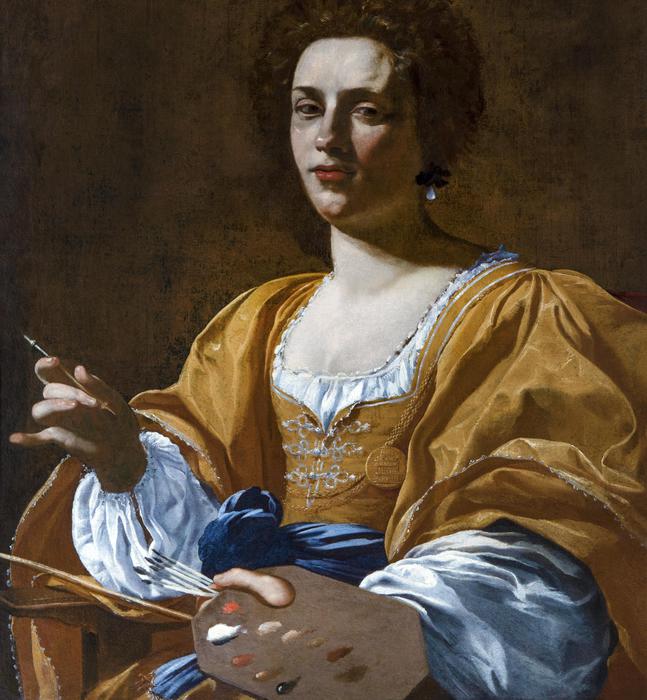
In Rome Artemisia had many suitors, but as she refused them, they started spreading rumors about her. This is how she got a really bad reputation. Because she preferred learning and painting rather than doing housework, many described her and her lifestyle as “wild”.
The rape
However, the play doesn’t show Artemisia’s life, but the rape trial that she brought against the artist Agostino Tassi.
In 1611 Agostino Tassi, a close friend of Artemisia’s father, became her painting tutor. He was a powerful and talented painter and was the Pope’s protégé. But he was wrathful and violent as well, and had many problems with the law.
Soon, he became obsessed with the young painter. He stalked her everywhere, became jealous of any other man who talked to her and followed her inside her house, ignoring her protests and refusals. His obsession grew with the passing of the time until he raped her in May 1611.
The trial
One year later, Orazio understood that Tassi was not going to marry his daughter, so he pressed charges against him. The play reports exactly what happened during the trial; in fact, the company used the written testimonies as their source material.

We see three actresses on stage; they interchange roles almost in every scene and they are just magnificent. Each one of them plays both the questioner and one of the main characters.
Tuzia Medaglia
First we meet Tuzia Medaglia, a dear friend of the Gentileschi family, played by Kathryn Bond. She lives with them to “straighten” Artemisia, or rather control her, and ends up being a mother figure for her, a person who she can trust. In her testimony, however, Tuzia doesn’t appear to be a really good friend to the girl. She describes Tassi as a “real gentleman” who showed great affection for Artemisia, and she takes his side.
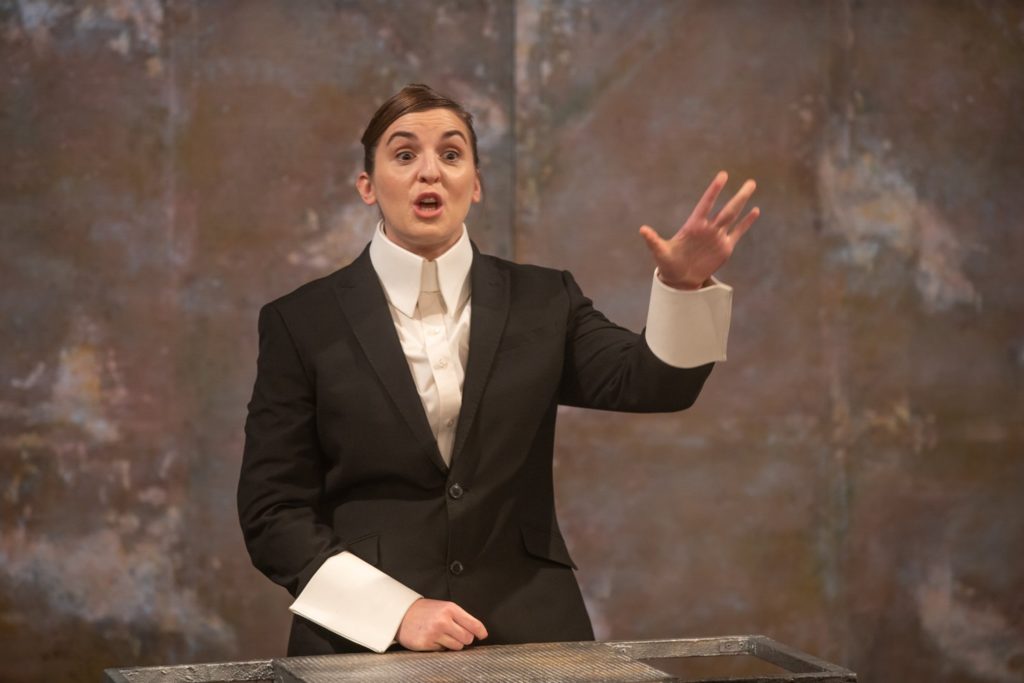
Tuzia’s mind is shaped by the society and beliefs of the time in which she lived. When Artemisia tells how Agostino stalked her and how she tried to report it to Tuzia, the woman just says that she overreacted and that those “attentions” must have been only flattering for her, after all.
We also find out that the day of the rape Tuzia was the one who let Agostino in the house. Also, when he started harassing Artemisia she was in the room with them. Although the girl asked her not to leave them alone, she left and let them stay alone for hours.
At the end of the trial the woman seems to feel guilty and tells the truth about the aggressive and obsessive manners of Agostino, both towards Artemisia and herself. But Artemisia won’t forget the betrayal of her initial testimony. As a matter of fact, in many of her paintings we can find the theme of female solidarity, something she would have wanted from Tuzia.
Susanna and the Elders
The most powerful moments of the play are the ones in which the actresses reenact two of the artist’s artworks in a modern and ironic way. One of them is Susanna and the Elders, dated to 1610. It’s the first painting by Artemisia, who was only 17 years old at the time.
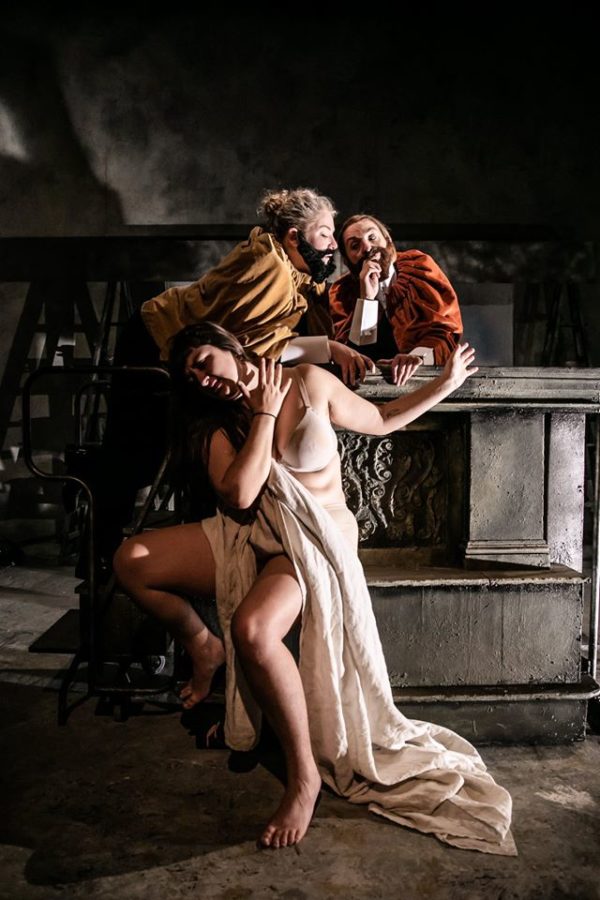
You can find Susanna’s story in the Book of Daniel, from the Old Testament. Two old men catch the chaste Susanna bathing and they blackmail her; if she won’t satisfy their sexual desires, they will tell her husband that they caught her with a young lover. Susanna decides not to submit to their threats, and eventually her husband will expose the elders’ lie.
Artemisia decided to paint this scene at the time when Agostino and his friend Cosimo Quorlis stalked her everywhere. This is the most interesting aspect of this reenactment; the characters of the painting themselves make us notice the difference between the way Artemisia’s painting tells the story and the way paintings made by men depict it.

In Artemisia’s one we can see the revulsion that the character is feeling from the position of her body. She’s not inviting the elder’s gaze, or, presumably, that of the male viewer; she did not “ask for it” at all. Also, Susanna’s body is very realistic, while male painters usually idealize it.
-

Alessandro Allori, Susanna and the Elders, 1561, Musée Magnin, Dijon, France. Wikimedia Commons. -
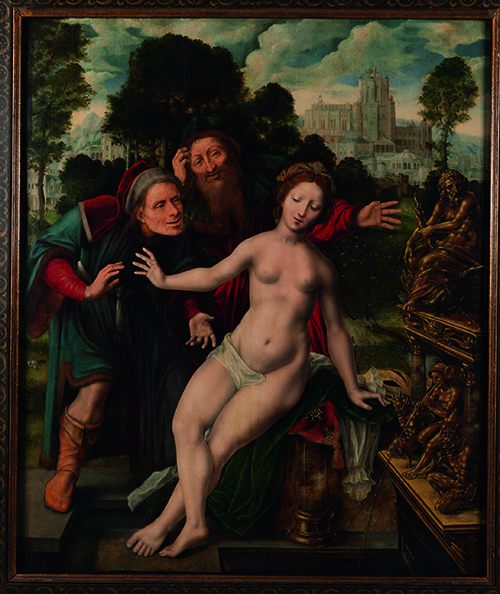
Jan Matsys, Susanna and the Elders, 1540-1560, Phoebus Foundation, Jersey, GB. Wikimedia Commons.
Still undressed from the reenactment of the painting, Artemisia, played by Ellice Stevens, tells us about the rape. It’s a very moving moment, as she tells the story in great detail while she dresses again.
We can picture it in our minds and feel exactly what she felt: the discouragement when she saw Tuzia leaving the room; the dread when Agostino locked the room and shut her mouth so that she couldn’t scream; the pain when he raped her; the rage and sense of impotence after he did it.
Agostino Tassi
If we can feel a little bit of sympathy for Tuzia when she finally tells the truth, we can’t help but hate Agostino Tassi, played by Sophie Steer, from his first appearance on stage.
He keeps denying every charge. He pretends not to understand why they arrested him, saying that he had never been alone with that girl. But he also keeps contradicting himself and blaming Artemisia for everything.
He shows classic sexist and macho behavior, calling the girl names; he says that he only wanted her to behave properly for the good of her father; he says that he always saw her in the company of many men – a fact that Tuzia, who was constantly with her, later denies.

After he raped Artemisia, Tassi tells her that he would have married her to calm her down, even if he doesn’t keep the promise in the end. That’s the worst thing. Besides the trauma, Artemisia also had to worry about her future, because the rape would have dishonored her forever.
She has to get into an abusive relationship with Agostino, hoping that one day he would marry her so that she wouldn’t become an outcast from the society. When he breaks that promise she decides to press charges, but she is the one who is treated as guilty.
“It’s true, It’s true, It’s true”: the torture
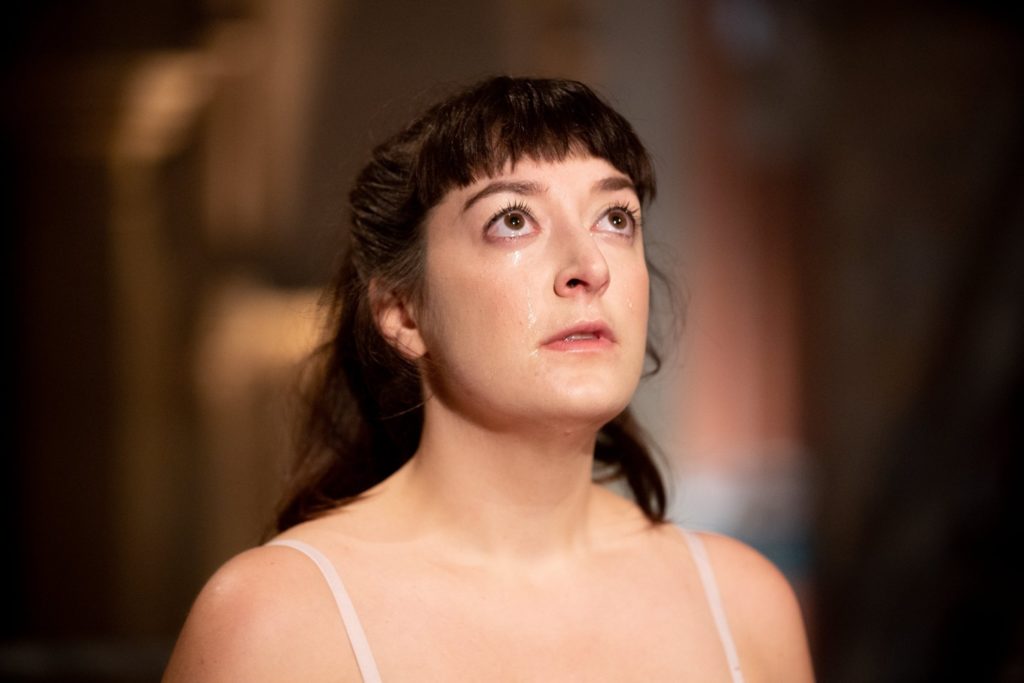
Even if she is the victim, the court tortures her psychologically and physically, to ensure that she’s telling the truth. First, they force Artemisia to have long, painful, and humiliating gynecological examinations in front of many people. As she was not a virgin anymore, the only way to prove she was telling the truth was torture.
Here comes the most shocking and heartbreaking moment of the play, when they force Artemisia to repeat her statement another three times. The first time while she looks her rapist in the eyes; the second, while they use the vice of the Sybil on her; the third, while she is under the Sibille torture and Agostino himself asks her the questions.
Why didn’t they torture Agostino Tassi, since he was the accused? I’ll explain how the Sibille torture works. They would tie one’s fingers with ropes that got tighter and tighter and which could break the phalanges. So, this torture could make you lose your fingers.
Artemisia and Agostino were both painters. The difference is that the first was a woman and the second a man: the fingers and the work of a male painter were more precious. While Artemisia was being tortured she showed her hands to her rapist and screamed: “This is the ring you gave me, these the promises!”.
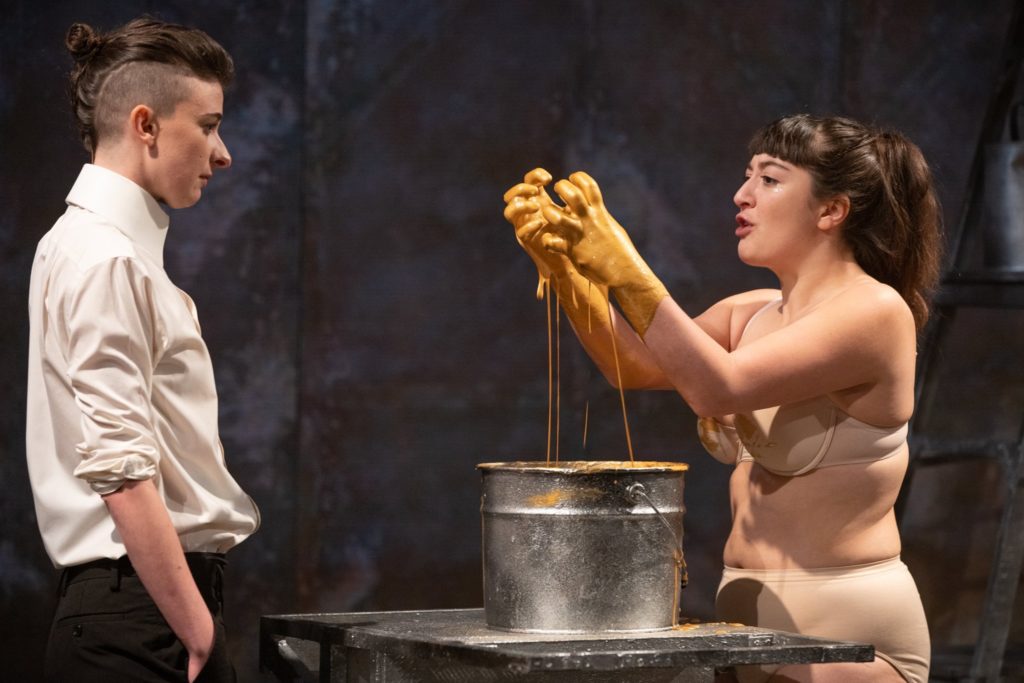
Artemisia accepted the torture in order to affirm her rights. And with her hands full of her blood she also repeatedly cried “It’s true”, the sentence that became the title of the play.
Judith slaying Holofernes

The play ends with the reenactment of Judith slaying Holofernes, the painting that sums up the whole happening. In the trial, we understand that Agostino and Cosimo had stolen the painting because they thought it would have aroused suspicion; they didn’t realize that the theft would have aroused more suspicion.
The work represents the moment when Judith, with the help of her maid, beheads Holofernes, the presumptuous Babylonian general who had besieged her town for 34 days.
In Artemisia’s painting you can see Judith’s effort, the tension of her muscles, but also her determination and rage against that man. In the work of other artists this aspect is missing. Many art historians say that this was the artist’s way of expressing all the feelings she had been channeling. This work is like an act of revenge against her rapist.
-
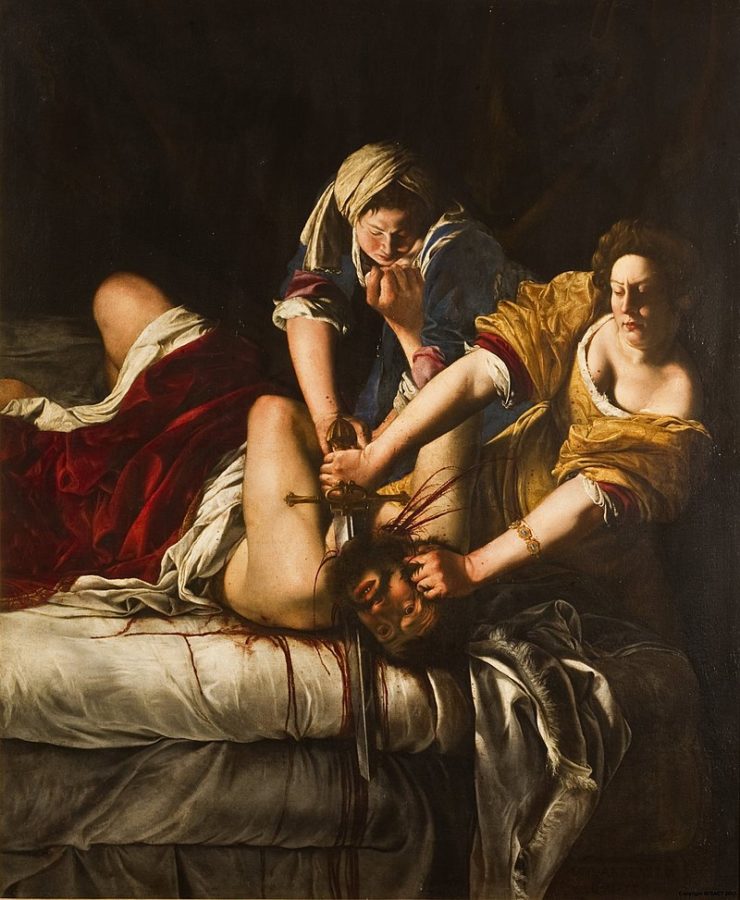
Artemisia Gentileschi, Judith slaying Holofernes, 1614-1621, Uffizi Gallery, Florence. Wikimedia Commons. -

Caravaggio, Judith beheading Holofernes, ca. 1598-99 or 1602, National Gallery of Ancient Art at Palazzo Barberini, Rome. Wikimedia Commons.
We can also find the female solidarity theme that I mentioned before; without the help of her maid Judith wouldn’t have been able to kill Holofernes. The painting contrasts with the failure of Tuzia, who didn’t assist her while she was in danger.
We are not defined by our past
In the end, Agostino Tassi was found guilty: he was sentenced to exile from Rome. However, he came back after a few days and kept painting and living his life as if nothing had happened. On the other hand, Artemisia had to marry a man she didn’t love and leave Rome right after the trial to save both her honor and her name. This makes you wonder who the court really condemned.
Even though the rape surely had a major impact on Artemisia’s life and art, the play tells us that we cannot define her by it. She had a long life, full of experiences and feelings, both good and bad. She would have had a great success even if all of that hadn’t happened.
What we can certainly tell is that she managed to turn all her pain and rage into something forceful, that the world will always remember. And that is what makes the difference. Don’t miss It’s true, It’s true, It’s true this weekend! You can stream it online on the Barbican London or on the theatre company’s website.
What has really changed?
We are in the 21st century now, and there is still catcalling, stalking, raping; many people are still afraid of telling their harassment or abuse stories. Women are still the guilty ones: the fault is on them from the very beginning. They “ask for it” because of their clothes, or because of many other reasons. And unfortunately, there are a lot of people who still believe all of this.
So, this is the question that the play leaves us with: what has really changed?
If you want to know more about Artemisia’s story, you can read these articles:
